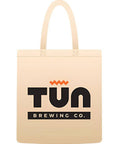Introduction
Alright, let’s talk beer. Not the kind you find in a sad fridge at the back of a corner shop, but proper beer. The sort brewed in small batches by people who lose sleep over hop schedules. The UK has a cracking history with beer, and craft brewing is just the latest twist in a much longer tale.
Early Brewing Traditions
Brewing’s been knocking about in Britain for well over 2,000 years. Back in the day, Celtic tribes brewed grainy fermented drinks using wild yeast, no thermometers, no stainless steel, just pure instinct. The Romans helped shape things, but it was really in medieval times that beer became everyday fare. Women, known as alewives, brewed beer at home before monasteries took over with a bit more method behind the madness.
Hops arrived in the 1400s, imported from Flanders. They were a game changer. Before that, beer spoiled quickly. Hops sorted that and added the bitterness we now love. In the 18th century, Ralph Harwood’s porter gave Londoners something dark, strong, and satisfying, while Burton-on-Trent’s pale ales benefited massively from the region’s gypsum-rich water. That water was basically nature’s gift to brewing.
Industrialisation and Mass Production
By the 1800s, things got a lot more scientific. Steam engines sped everything up, and brewing became big business. The hydrometer, introduced by John Richardson, helped brewers understand sugar content better, which meant more control over the final product.
Outfits like Bass, Whitbread, and Guinness went from local heroes to household names. Bass even scored the UK’s first registered trademark. By 1880, there were over 10,000 breweries across the country. Beer wasn’t just a drink anymore – it was an industry. One with exports stretching as far as India and the Caribbean.
The Decline of Traditional Brewing
Then came the slump. The 20th century hit brewing hard. Two world wars, rising costs, and industry consolidation wiped out thousands of smaller breweries. By the 1970s, most beer came from just a few massive companies, and much of it tasted pretty similar.
Cask ale, the real backbone of British brewing, was on the ropes. It was being replaced by heavily filtered, pasteurised beers that lasted longer but didn’t exactly set the taste buds alight.
The CAMRA Movement
In 1971, four lads (Michael Hardman, Jim Makin, Graham Lees, and Bill Mellor) had had enough. They met up in a pub in Kerry and created CAMRA (the Campaign for Real Ale). Not funded, not corporate, just frustrated drinkers who missed the depth and character of traditional beer.
CAMRA championed cask-conditioned ale and proper pub culture. Their Good Beer Guide and beer festivals became essential reading and must-visits for beer lovers. They didn’t just stop the rot, they brought real ale back into the conversation.
The Birth of the Craft Beer Revolution
While CAMRA focused on tradition, another group of brewers started asking, “What else can we do with beer?” Influenced by American craft breweries, they embraced hops, experimentation, and a total lack of fear when it came to style.
Alastair Hook launched Meantime in 1999, bringing precision and a lager revival. Then came BrewDog in 2007, who weren’t so much knocking on the door as kicking it off its hinges. Thornbridge’s Jaipur also played a big part, proving British IPAs could hold their own on any stage.
A New Era: Diversity and Experimentation
By the 2010s, we had a full-blown craft scene. From fewer than 500 breweries at the start of the millennium to over 2,000 by 2020. Suddenly, everyone had a local brewery. And no two were the same.
The Kernel in London quietly built a loyal following. Beavertown brought comic-book cans and hop-forward pale ales. Cloudwater in Manchester went big on hazy IPAs and seasonal rotations. Choice exploded – sours, barrel-aged beasts, fruit-infused concoctions, and everything in between.
What also changed was the vibe. The community got broader. More inclusive. Craft beer started to look like the people who drank it, not just the people who brewed it.
Modern Craft Beer Scene
Right now, the UK’s craft beer scene is both exciting and unpredictable. Some breweries have scaled up, some have shut down. There’s more focus on sustainability, low and no-alcohol options, and direct-to-consumer models.
Collabs are constant. Taproom culture is thriving. And punters know their stuff. People care about how their beer’s made and who’s making it.
Conclusion
So that’s the tale so far. British beer’s always had depth, but now it’s got range too. From ancient fermentation to ultra-modern IPAs, we’ve gone full circle and then some.
What’s next? Hard to say, but I’m sure it will involve thoughtful brewing, weird ideas, and people who genuinely care about beer.







